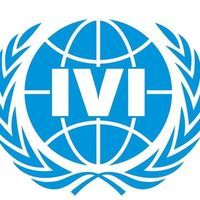预约演示
更新于:2025-05-07
Salmonella Infections
沙门氏菌感染
更新于:2025-05-07
基本信息
别名 Infection, Salmonella、Infections, Salmonella、SALMONELLA + [32] |
简介 Infections with bacteria of the genus SALMONELLA. |
关联
79
项与 沙门氏菌感染 相关的药物靶点- |
作用机制 免疫刺激剂 |
在研适应症 |
非在研适应症- |
最高研发阶段批准上市 |
首次获批国家/地区 韩国 |
首次获批日期2022-05-18 |
靶点- |
作用机制 免疫刺激剂 |
在研适应症 |
非在研适应症- |
最高研发阶段批准上市 |
首次获批国家/地区 印度 |
首次获批日期2020-01-09 |
靶点 |
作用机制 PBPs抑制剂 |
原研机构 |
非在研适应症 |
最高研发阶段批准上市 |
首次获批国家/地区 比利时 [+8] |
首次获批日期2014-09-10 |
268
项与 沙门氏菌感染 相关的临床试验NCT06757283
Evaluation of Typhoid Conjugate Vaccine (TCV) Effectiveness Among Bangladeshi Children Using the Test-negative Design
This is a prospective closed cohort, open-label, phase III effectiveness study using a test-negative design of a typhoid conjugate vaccine, ZyVac® TCV (purified Vi capsular polysaccharide of Salmonella Typhi conjugated to tetanus toxoid as carrier protein), manufactured by Zydus Lifesciences Limited. The study will be conducted in a closed cohort population among children aged 6 months to 15 years residing in wards 5, 6, 7, 48, 49, 50, 63, 71, and 72 of Dhaka South City Corporation (DSCC). The targeted number of age-eligible children in the study area is
92,000 among them
60,000 will be vaccinated. A subset of the first 600 consenting participants will be selected by age strata (6 months to <2 years, 2-4 years, 5-15 years) for enrollment in the immunogenicity study with an additional three follow-up visits. Diary cards will be used to collect adverse events (AEs) following immunization (AEFI) data up to day 7 for a subset of active follow-up of the first 600 vaccinated participants. Participants not in this subset will be encouraged to go to the 'Adverse Event Monitoring Cell' at the Maniknagar field office. Data on serious adverse events (SAEs) will be reported for six months after vaccination. All study updates including AEs and SAEs will be reported to the data safety and monitoring board (DSMB) and sponsor. Passive surveillance for typhoid fever will be carried out in the Maniknagar field office and Mugda Medical College and Hospital in the catchment area among the age-eligible children.
92,000 among them
60,000 will be vaccinated. A subset of the first 600 consenting participants will be selected by age strata (6 months to <2 years, 2-4 years, 5-15 years) for enrollment in the immunogenicity study with an additional three follow-up visits. Diary cards will be used to collect adverse events (AEs) following immunization (AEFI) data up to day 7 for a subset of active follow-up of the first 600 vaccinated participants. Participants not in this subset will be encouraged to go to the 'Adverse Event Monitoring Cell' at the Maniknagar field office. Data on serious adverse events (SAEs) will be reported for six months after vaccination. All study updates including AEs and SAEs will be reported to the data safety and monitoring board (DSMB) and sponsor. Passive surveillance for typhoid fever will be carried out in the Maniknagar field office and Mugda Medical College and Hospital in the catchment area among the age-eligible children.
开始日期2025-04-01 |
CTR20244434
诺氟沙星胶囊(0.1g)在中国健康受试者中空腹给药条件下随机、开放、单剂量、两序列、两周期、双交叉生物等效性试验
按有关生物等效性试验的规定,选择杏林制药株式会社为持证商的诺氟沙星片(商品名:バクシダール®,规格:100mg)为参比制剂,对云鹏医药集团有限公司生产并提供的受试制剂诺氟沙星胶囊(规格:0.1g)进行空腹给药人体生物等效性试验,比较受试制剂中药物的吸收速度和吸收程度与参比制剂的差异是否在可接受的范围内,评估两种制剂在空腹给药条件下的生物等效性。同时观察健康受试者口服受试制剂和参比制剂后的安全性。
开始日期2024-12-22 |
申办/合作机构 |
CTR20242238
盐酸多西环素片人体生物等效性研究
以中国健康受试者为试验对象,采用自身交叉对照的试验设计,测定德全药品(江苏)股份有限公司持证生产的盐酸多西环素片给药后血浆中的多西环素在健康受试者体内的血药浓度经时过程,估算相应的药代动力学参数,并以PfizerJapanInc.持证生产的盐酸多西环素片[商品名:Vibramycin,规格:100mg(按C22H24NO8计)]为参比,评价制剂间的生物等效性,并观察盐酸多西环素片在中国健康受试者中的安全性。
开始日期2024-07-18 |
申办/合作机构 |
100 项与 沙门氏菌感染 相关的临床结果
登录后查看更多信息
100 项与 沙门氏菌感染 相关的转化医学
登录后查看更多信息
0 项与 沙门氏菌感染 相关的专利(医药)
登录后查看更多信息
30,592
项与 沙门氏菌感染 相关的文献(医药)2025-12-31·Gut Microbes
The immune response modulated by inoculation of commensal bacteria at birth impacts the gut microbiota and prevents
Salmonella
colonization
Article
作者: Rychlík, Ivan ; Guabiraba, Rodrigo ; Caballero-Posadas, Ignacio ; Kubasova, Tereza ; Laroche, Béatrice ; Menanteau, Pierrette ; Kempf, Florent ; Velge, Philippe ; Drumo, Rosanna ; Virlogeux-Payant, Isabelle ; Lalmanach, Anne Christine ; Roche, Sylvie ; Chaumeil, Thierry ; Larivière-Gauthier, Guillaume ; Chaussé, Anne Marie
2025-12-31·Gut Microbes
Genetic diversity of
Salmonella enterica
during acute human infections
Article
作者: Hendin, Natav ; Grote, Alexandra ; Livny, Jonathan ; Earl, Ashlee M. ; Adler, Amos ; Adani, Boaz ; Amit, Sharon ; Rahav, Galia ; Gal-Mor, Ohad
2025-12-31·Gut Microbes
Salmonella
utilizes L-arabinose to silence virulence gene expression for accelerated pathogen growth within the host
Article
作者: Tao, Jing ; Wang, Danni ; Yu, Jingchen ; Tang, Huang ; Gu, Shuang ; Chen, Yana ; Wen, Bingjie ; Wang, Zuoqiang ; Wang, Chengyue ; Zhou, Tao ; Ni, Jinjing ; Lu, Jie ; Huang, Wanqiu ; Yao, Yu-Feng ; Xie, Qing
248
项与 沙门氏菌感染 相关的新闻(医药)2025-04-30
·知识分子
4.30知识分子The Intellectual 导读当地时间4月30日,美国国家科学院(National Academy of Sciences)公布了2025年新当选院士名单。今年共有120位院士和30位外籍院士入选,其中包括中国中医科学院青蒿素研究中心研究员屠呦呦。现年94岁的她,因发现青蒿素治疗疟疾的突破性贡献,于2015年获得诺贝尔生理学或医学奖。她还获得过国家最高科学技术奖、并被授予共和国勋章。不过,她仍未当选中国科学院或中国工程院院士。2015年诺奖揭晓后,公众对屠呦呦未能入选院士的质疑随之而来。获奖后接受《纽约时报》采访时,屠呦呦表示自己过去曾多次申请中国科学院院士,但未能成功。“卫生部长部长曾亲自推荐我当院士。但是,有许多因素在起作用。情况很复杂”。青蒿素发现于大型研究抗疟疾药物的“523任务”中,这个项目规模大、参与人员众多,关于屠呦呦能否成为这个项目成果的代表性人物,一直存在争议。饶毅与合作者曾在《中国科学》发表文章,基于原始中文论文、文件和访谈资料,他们肯定屠呦呦为“发现青蒿素的代表性人物”,在青蒿素的发现过程中起了“关键作用”,青蒿素发现是“中药的科学研究丰碑”。尽管作出如此原创性且具有全球影响的贡献,屠呦呦在很长一段时间内并没有获得国内重要奖项或是类似院士等重要荣誉头衔。诺奖之后,屠呦呦依然未能入选两院院士。年龄或许是一个限制因素。屠呦呦获奖时已84岁,而中国科学院和中国工程院对院士增选设有一定的年龄门槛。根据2014年修订的《中国科学院院士增选工作实施细则》,65周岁以上的候选人需由6名或以上院士推荐,且其中至少4人须来自候选人申请学部,推荐方为有效。2023年改革后对这一标准有所调整,但还是要求至少两位院士推荐。尽管这一规定并未将候选人年龄严格限定在65岁以下,但也为高龄候选人增选院士制造了障碍。以2023年为例,中国工程院院士增选的有效候选人中,最年长者77岁。中国科学院方面,最年长的候选人为68岁。而美国国家科学院院士的入选没有年龄限制。纵观屠呦呦的荣誉历程,国际科学界的认可始终走在国内前面。她先是在2011年、2015年先后获得拉斯克奖与诺贝尔奖,随后才在2016年,数度无缘之后终于获颁国家最高科学技术奖。如今,获得诺奖十年后,先授予这位中国科学家院士荣誉的,仍然是美国国家科学院。2009年4月21日,正在北京大学医学部读硕士学位研究生的黎润红(现任职于北京大学医学人文研究院),在饶毅和张大庆教授指导下,以青蒿素为科学史研究课题,曾在中国中医科学院中药研究所对屠呦呦进行了访谈。访谈中,屠呦呦详细回顾了青蒿素发现的过程,《知识分子》获黎润红授权刊发访谈实录。撰文 | 黎润红● ● ●黎=黎润红屠=屠呦呦黎:请问您当时是怎么参加“523任务”的?主要做了哪些方面的工作?屠:青蒿素研究时间长、牵涉面宽,好在我们编了一本《青蒿及青蒿素类药物》,刚刚出版,现送你们三本,一本请留给饶毅和你、另外两本请转给我母校,你可回去看看,书里有比较详细的叙述,现只能概要地聊聊。我们中药所1967年没有参加“523任务”。早期,中医研究院广安门医院和针灸所搞针灸的同事们参加了。1969年,“523办公室”的领导到中医研究院,我们领导负责接待工作。“523办公室”的领导说:中央领导十分重视抗疟防治的研究工作,为解决问题,希望你们能参加此项任务。院领导当即表示,虽然处于文化大革命,中国中医研究院科研工作全部停顿,但我们不能推辞,要尽最大努力承担工作。后来就指定我为课题组长。当时就是这样一个情况。1969年2月,我先开始收集历代的文献资料、收集单秘验方,从中挑选出要研究的中药,提取后送236部队(军事医学科学院)做药效。当时,我们还没动物试验,到1970年年中,筛了百余种,包括青蒿在内,都没有理想结果。后来,236因其他任务也不再协助我们了,我们这个组也就停了。直到1971年5月广州会议以后,我们这个组经过调整和加强,才重新开展工作。1971年下半年,开始筛了一些中草药、也复筛了一些,都没有大的进展,后在《肘后方》“青蒿一握、绞汁服”的启示下,将青蒿用低沸点溶剂提取,得到“醚中干”[1](乙醚提取的中性部分)的化学有效部位,当年10月,鼠疟试验全部转阴,年底猴疟也得相同效果;1972年8、9月在海南和北京用青蒿“醚中干”治疗30例间日疟、恶性疟患者,获满意效果。1972年11月,在“523”的全国性会议上做了汇报。与此同时,我们对“醚中干”进行活性成分分离,1972年11月从中获得几个结晶,12月初,鼠疟确认其Ⅱ号结晶是活性成分,曾称“青蒿素Ⅱ”,后定名为“青蒿素”,应用至今。几十毫克剂量就使疟原虫全部转阴。1972年11月得到青蒿素后,即着手其化学结构鉴定研究。经确定其分子式分子量等,并证实其不含氮元素,又结合四大光谱数据,推定为倍半萜类化合物,属于新结构类型抗疟药。为争取时间确定其分子结构,就想找条件好的单位协作,了解到中科院上海有机所刘铸晋对倍半萜类化合物的研究有较多经验,后又了解到中科院生物物理所有先进的X线衍射,先后请他们合作研究青蒿素的结构,到1975年底,确定了青蒿素的立体构型。当然,不是什么事情都会一帆风顺的。有人说我们1973年做的青蒿素不成功,临床效果不好。1973年我们开展对青蒿素化学研究以外,还从北京产的青蒿中大量提取青蒿素。因为我们剂型室没恢复工作,所以提出来的青蒿素是拿出去外加工做的片剂。同年9月到海南疟区对恶性疟患者进行临床试用,结果5例患者,仅1例有效,效果不确切。经研究发现这些片子敲都敲不碎,片剂的崩解度有问题,又赶着将青蒿素原粉直接装胶囊,改用胶囊剂。副所长章国镇同志亲自带着胶囊赴海南昌江现场,做了几例。因为季节比较晚了,海南地区工作即将收尾,只做了3例间日疟,效果都是很好的。证明青蒿素抗疟有效。后来我院医疗队用我们提取的青蒿素继续在全国做了380多例,全部有效。附注一:1973年北京中药所提取的青蒿素II临床试验情况在进行青蒿素Ⅱ的临床试用前,由于急性动物试验的结果存在一定的问题,所内部对青蒿素Ⅱ是否可以进行临床使用产生了分歧。后经3人进行临床试服,未发现明显问题后于当年9月份赴海南开展临床试用。以下为当年的临床试验结果:“1973年9-10月,北京中药所用提取出的青蒿素在海南昌江对外地人口间日疟及恶性疟共8例进行了临床观察,其中外来人口间日疟3例。胶囊总剂量3-3.5g,平均退热时间30小时,复查3周,2例治愈,1例有效(13天原虫再现)。外来人口恶性疟5例,1例有效(原虫7万以上/mm3,片剂用药量4.5g,37小时退热,65小时原虫转阴,第6天后原虫再现);2例因心脏出现期前收缩而停药(其中1例首次发病,原虫3万以上/mm3,服药3g后32小时退热,停药1天后原虫再现,体温升高),2例无效”。屠呦呦口述的“后来我院医疗队用我们提取的青蒿素继续在全国做了380多例,全部有效。”指的是从1975年成都会议之后,全国进行大协作对青蒿素及其各种制剂进行临床验证时,中医研究院医疗队所做的总病例数。1973年临床试验回来以后就向“523办公室”汇报了。汇报以后,1974年1月,他们就说要开一个中西医结合寻找新药的会议。这个“523办公室”当时起到组织领导作用,因为当时文化大革命全部瘫痪了,只有部队来抓,而且任务期间领导关系也有变化,成为三部一院的领导,后来参加的单位越来越多。中医中药组实际上开始重点抓的是针灸,后来才是中药,中药抗疟传统多用常山,这个常山生物碱有效是有效,但有呕吐副作用,不好用到临床去,所以曾经做过好多改造结构的衍生物。西方1820年从金鸡纳树皮中提取出奎宁,后又研发好多衍生物,如阿的平、乙胺嘧啶,伯氨喹啉,最后的王牌氯喹,都是含氮的喹啉类药物,用了一百多年,已经产生抗药性了。我去了两次海南岛现场,感染疟疾的患者40多度高烧不退,又是恶性疟,后来转为脑型疟。好多年轻同志身体挺棒的,得了疟疾40度以上高烧,两天以后嘴唇都紫了,要不给他药吃,那不就送命了。当时大家都期望搞出一个全新结构的、疗效也很好的药物,来解决氯喹抗药性问题。国外,据报道美国在华盛顿陆军研究所以改造结构为主,有一个比较好的甲氟喹,但还是喹啉类的化合物。国内来说,实际上这个项目60年代中期,就是一个军工项目,军事医学科学院已经做了不少工作。1967年成立“523办公室”,全国七大省市都来做这个项目。据报道已经筛了化合物、中草药等4万多种。我从北医毕业后正好中医研究院建院,就来了中医研究院中药研究所工作。当年毛主席提出来要西学中,所以那时候办了一个西学中班,希望有西医工作经验的参加学习。我从北医毕业后,来到中医研究院中药所,学了两年半的西学中[2]。确实,学完了之后还是很有收获的。当时一些中医老大夫从全国各地请来的,像蒲辅周[3],他后来成为周总理的保健医生。青蒿素是一个原始性创新,因为它是一个全新的结构,而且疗效也很好。解决了抗性疟疾的治疗问题。所以大家比较重视,也是因为这个道理。但工作也不是一帆风顺的,从我的思路来说,中国有5000年的悠久历史,对医学也是比较重视的。我就开始搜集古代的书籍,地方的经验,我这有一本册子(疟疾单秘验方集)给你看,这是我69年做的。那时候我做了200多张卡片。黎:是否还有卡片?屠:你看看时间你就知道了,1月份开始做的,4月份就做出来了。你看这个第5页就是青蒿了,我编了这个本子,然后给“523办公室”送去,我说,我整理的这个,你们可以看看。七个省市嘛,我拿去了8本,一本给“523办公室”,每个地区一本,请大家来发掘。从青蒿中发掘出青蒿素牵涉到几个问题,一个品种问题,菊科蒿属是个很大的属,市场调查品种也不少,1963年和1977年的中国药典上就写了两种品种[4]。还有药用部位问题,梗没有效果。我就想到各种因素,后来就跑到门头沟药库,找头年新进的青蒿药材,经研究还真跟采收季节有关。早期采集的根本就没有青蒿素,因为植物体内根本就还没生物合成这些有效物质,只在花前叶茂时才合用。所以,后来药厂提取青蒿素都用那个季节的青蒿叶子为原料。还有一个提取方法问题。从青蒿中得到具有100%疟原虫抑制率的提取物是很关键的问题。由于其抗疟活性基团是过氧,在青蒿原药材中含有很多其他化学成分,在一些常用的水、乙醇做溶剂提取时,温度超过60℃就破坏了具有抗疟活性的过氧基团。后经我们实验,其实青蒿素本身是很稳定的,用水煮沸半小时或乙醇回流4小时,其抗疟活性稳定不变。在做青蒿素化学结构研究时,为确认羰基的存在,我们做了还原衍生物,得到双氢青蒿素。由于在青蒿素中引进了羟基,方便做更多的衍生物。通过青蒿素构效关系的研究,我们明确了过氧是抗疟活性基团,也认识到双氢青蒿素的抗疟活性更高,安全性也比较好。 经研究开发临床药效提高了10倍,剂量就可以减少到1/10,总剂量480mg就解决问题。完成双氢青蒿素研发后,中药所终于将1973年9月发现的双氢青蒿素于1992年获得新药证书。1981年WHO(世界卫生组织)来中国开会,安排我做青蒿素化学研究的报告。会议对于青蒿素是一片赞扬。后来,一位法国记者问,当时是为了战争,现在的话世界都在用青蒿素,你什么感想?我说,我很高兴,作为一个医药科技人员,工作就是要为人类健康服务的。国家鼓励原始性创新,加强原始性创新。我觉得要谈论的问题恐怕已经不是发明的问题了,就是一个原始性创新出来以后怎么办的问题。那么这个原始性创新不是说的,是要很多的艰苦的工作。要营造好的气氛,让学术不浮躁,科学和学术要实事求是。所以我们就一直在说,能不能以青蒿素做一个解剖,从里面吸取一些有意义的经验和教训。中药领域还有一个问题,有的人不太重视青蒿素,觉得单药单一成分,他们一下子就把它推到西药里去了。21世纪,现代科学是与时俱进的、不断发展的,你拿现在科学的观点、手段再来挖掘中医药的宝库,你就能发现一些更好的东西出来。我想在自己的书上提出这个观点,要大家多做些原始创新。另外,原始创新出来以后,应该有些政策出来保护它们。青蒿素出来多少年了,整体成果是大协作的产物,当年的协作单位和参与者从不同方面做出了各自的贡献。在北医就有一位赵燏黄[5]专门搞本草研究的。我们是学了本草的,有这个基础又系统学了中医药,“西学中”给了我思路,从祖先古代经验来找,经验还是很多的。77年在《科学通报》上发表了青蒿素结构,这是第一篇,我们打的报告给卫生部,经批准后发表的,马上就被CA(注:美国化学文摘)收载了。我们总共从青蒿中分离鉴定了17种化学成分,以及几个混乱品种的20来个化学成分,在81年后陆续发表。黎:这个国家发明奖的证书当时是发了6张还是只是这一张?屠:这个我就不知道了。我们也看到过网络上出现过与我们持有的不一样的国家发明奖证书,不知是什么道理。出现有关青蒿素成果的不同认识也不奇怪,但客观事实不会是多版本的。首先要认定事实,认识才能正确,不然只能浪费时间和精力做无谓的争议。我们需要向前看,国家需要大力促进科学发展,实现科教兴国。科技工作者要有责任感,要努力创新。附注二:有关国家发明奖的争议一、国家发明奖名单与鉴定会名单的差异1978年在高邮举办青蒿素鉴定会,会上确定的主要研究单位为卫生部中医研究院、山东省中西医结合研究院、云南省药物研究所、广州中医学院、四川省中药研究所、江苏省高邮县卫生局六家,其他单位为协作单位,1979年9月18日、20日、21日,国家发明奖评选委员会召开第三次会议,审定发明项目及相应的奖励等级,审查批准了十五项发明创造,并分别评定为二、三、四等发明奖。其中抗疟新药——青蒿素的制造获国家发明奖(二等)。10月15日《人民日报》第四版报道了卫生部中医研究院中药研究所、山东省中医药研究所、云南省药物研究所、中国科学院生物物理所、上海有机化学研究所,以及广州中医学院发明的抗疟新药——青蒿素的制造获得国家二等发明奖。由于对外公开报道的就是这六家,至于其他的协作单位包括之前在鉴定会上确定在主要研究单位中的四川省中药研究所、江苏省高邮县卫生局两个单位完全没有提到。在《迟到的报告》一书出版后,四川省中药研究所曾经参加过“523任务”的研究人员还给科技部成果局写过相应的文件要求“还历史于本来面目”。他们认为:“当时的评奖是不公正的,尤其是在鉴定书上他们作为第5家主研单位,为青蒿研究做了大量的工作,但是当青蒿素研究获得奖励时,四川一线的科技工作者却无一人授奖。在青蒿素获国家发明证书时,他们所的“523”科技人员均不知道,未将他们排入获奖单位并没有征求他们的意见。”[6]为什么1978年的鉴定会上提出的6家研究单位到了1979年获奖的时候变了,《迟到的报告》一书上认为:鉴定会由于是把青蒿简易制剂和青蒿素的研究两个项目作为一个大项,合并进行鉴定的,因此,青蒿素的研究部分排了4个单位;青蒿简易制剂的研究排了2个单位。后来国家科委发明奖评选委员会在评审中,认为青蒿素作为一个新药的发明,确认药物的化学结构必不可少。一个新药若不清楚其化学结构,就不可能确定为新药。因此,提出负担青蒿素化学结构研究的中国科学院生物物理研究所和中国科学院上海有机化学研究所应列入主要研究单位。四川省中药研究所和江苏省高邮县卫生局,研制的主要成果是青蒿生药片,对于青蒿素成果的研究发明,应列入主要协作单位。在当时的发明奖励条例中有规定:第十三条对发明项目如有争议,可向上级机关反映,上级机关应认真调查审理。第十四条各部门和各单位对群众的发明,应当给予鼓励,采取严肃认真和实事求是的科学态度。在贯彻执行奖励制度时,必须加强思想政治工作,提出社会主义大协作精神,反对本位主义、个人主义互不协作等不良倾向。对打击、压制发明和在发明尚弄虚作假,剽窃他人劳动成果的行为,应当批评教育,加以纠正,情节恶劣者,应给以处分,甚至依法惩办。[7]对于发明权的争议和处理:凡国家科委发明评选委员会通过的奖励项目,自公布之日起三个月内,任何人如有意义,均可向国家科委发明评选委员会办公室提出。公布三个月后如无人提出异议,即行授奖,超过三个月提出的异议,一般不予受理。凡国家科委发明评选委员会通过奖励的项目,自公布之日起三个月内,如有争议,一般由发明申报部门负责处理。为及时解决争议问题。正以任何一方,均应按照争议处理部门的要求,及时地如实的提供有关争议的补充材料和旁证文件。如在六个月内不作答复,即判为弃权,由争议处理部门裁决。[8]四川省中药研究所并没有在1979年公布结果的时候依据发明奖条例上的规定向国家科委提出意见而是到2005年才提出意见。此时国家科委并没有给出明确的解释。对此,笔者认为,这是文革后国家发明奖首次评选,在没有一个十分明确、细致的评审标准的情况下,国家发明奖评选委员会在评审时认为:作为一个新药的发明,确认药物的化学结构必不可少;一个新药若不清楚其化学结构,就不可能确定为新药。这种依据,也符合当时的历史事实。不过,无论是国家发明奖评奖委员会还是“523办公室”在1979年并未对四川和江苏这两家单位排除在获奖名单之外做出公开说明或者说并未告知他们,这说明当时在荣誉分配的问题上处理的不是很好,也从一个侧面反映了“523任务”在快要结束时的收尾工作做的不够完善。虽然后来《迟到的报告》一书中对四川省中药研究所和江苏省高邮县卫生局未能出现在获奖名单名单上做出了解释,也肯定了四川省中药研究所在“523任务”开展过程中的大量工作,但是这样的说明似乎有点晚而且权威性并不够。二、国家发明奖证书编号引发的误解我们在最初拥有的资料中发现《迟到的报告》一书与《青蒿素研究》一书中所使用的青蒿素的发明证书主要内容相同,只有其中的证书号码与排版方式略有不同,《迟到的报告》一书中编号为A00011,而《青蒿素研究》一书中的编号为A00612。为此,笔者在访谈不同的老科学家时也提到这个疑问,但是他们都不清楚这是为什么,有人说可能有真有假,也有人说是所里面弄丢了后来补发的,但是具体什么时候补发的就不知道。随着我们深入了解与资料搜集的完善,终于使该疑问有了一个比较清晰的答案。目前收集到的关于青蒿素的国家发明奖证书有几个不同编号的证书,第一个是中医研究院目前保存的编号为00011的发明证书[9],其他为保存在其余获奖单位的证书,编号为别为A00609(山东省中医药研究院)[10]、A00610(云南省药物所)[11]、A00612(中国科学院上海有机化学研究所)[12]。这几个单位拥有的证书原件如下:由于条件所限,我们未能获得全部的证书原件,根据证书的编排判断还有两张编号不同的证书,其中之一为中国科学院生物物理所的,证书编号应该为A00611,另一张为广州中医学院的证书编号为A00613,这些证书是连号的。根据发明奖规定的奖金分配原则:集体发明(包括协作单位),所得奖金按照发明者贡献大小,合理分配。几个单位共同完成的发明,其奖金由申报部门负责进行合理分配。针对青蒿素是卫生部作为申报部门申报的,因此奖金分配也由卫生部进行。有关发明奖证书、奖章以及奖金的分配情况,有如下记载[13]:图5青蒿素发明奖奖章(屠呦呦提供)图6卫生部科技局下发青蒿素发明奖奖金分配的通知图7中医研究院中药研究所向其他单位写的通知信函根据卫生部当时的文件指明:国家科委颁发的青蒿素发明证书(见中医研究院的发明证书)、奖章(只有一份,如上图为复制件)[14],建议由中医研究院照相复制给其他五个单位,原件由中医研究院中药研究所保存。根据中医研究院的信函以及相关单位的档案显示,当时中医研究院中药研究所将影印件给了其他单位。因此,当时虽然是六家单位为发明单位,但是拥有证书和奖章原件的只有中医研究院中药研究所一家。其实卫生部的这份通知为后来的多张证书的出现既提出的异议又为后面的争议埋下的伏笔。既然当时只有一张证书,现在为什么出现了6张,而且编号相差很多,但是后5张却是连号?为此笔者询问了原国家科委的一位对此有所了解的工作人员,据他所述:“青蒿素是1979年获得的国家发明二等奖,但是后来因为获奖单位和发明人的排名问题一直存有争议,后经较长时间的调解,达成较为一致的排名顺序(但还是有些单位和人员不服),重新打印了获奖证书。这就是二个证书的来由,应该是以第二张证书为准。”[15]其实前后的证书,内容都是一样,不同的只是证书编号和排版方式。因此,经过上述的说明,笔者认为,两种版本的4张证书以及还可能出现的两张不同编号的证书从根本上来说都是真的。根据科委工作人员所说的对排名问题一直存在争议,说明这个问题一直未得到很好的解决,就算是重新打印了获奖证书之后,很多研究人员并不知情,有关争议还是存在。注释:(上下滑动可浏览)[1]醚中干,指的是在研究植物药有效成分时用乙醚提取,先将植物中的混合成分按其极性大小粗略地分开,乙醚提取液中含有的主要是极性小的脂溶性混合物,再用不同强度的碱溶液(碳酸氢钠、碳酸钠或氢氧化钠溶液)依次提取,将得到强度不同的酸性成分;经过碱提取的残余液可以再用酸溶液(盐酸或硫酸溶液)提取,得到碱性成分(一般是生物碱或其它碱性成分),乙醚残余液中剩下的就只有中性混合成分。这是一种经典的系统分离方法。屠呦呦在分离过程中使用的是2%的氢氧化钠溶液提取,并省略了用酸溶液提取这一步,得到的乙醚中性部分(简称“醚中干”)[2]屠呦呦与余亚纲同为中医研究院西医离职学习中医班第三期学生,学习时间为1959年10月至1962年2月。[3]蒲辅周(1888-1975),四川省梓潼县人。现代中医学家,长期从事中医临床、教学和科研工作,精于内、妇、儿科,尤擅治热病。伤寒、温病学说熔于一炉,经方、时方合宜而施。1955-1975年历任中医研究院广安门医院内科医师、内科主任,中医研究院副院长等职务。曾任全国政协第三、四届委员。[4]《中华人民共和国药典》(以下简称《药典》)1977 版中药青蒿的原植物为黄花蒿(Artemisia annua L.)或青蒿(ArtemisiaapiaceaHance)二种植物,在解释性状时也分为黄花蒿和青蒿两种。不过从《药典》1985版开始,中药青蒿的原植物只有黄花蒿(Artemisia annua L.)一种植物。[5]赵燏黄(1883-1960),江苏省武进县,本草学家和中国生药学先驱者。1909年毕业于日本东京药学专门学校。他毕生致力于本草学和生药学的教学和科学研究,应用现代科学方法整理本草,研究中药,考订本草药品名实,为编修中国新本草做了大量开拓性工作,在澄清中药品种混乱方面做出了贡献,并为中国培育了几代药学科技人才。先后担任过任上海国立中央研究院化学研究所研究员,北京大学医学院药学系教授,中央卫生研究院中医(祖国医学)研究所生药室顾问、中国药学会北平分会副理事长、中医研究院中药研究所研究员等职务。[6]齐尚斌、万尧徳.还历史于本来面目——青蒿素研制中鲜为人知的故事.2005-11-1[7]中华人民共和国发明奖励条例(1978年12月28日国务院发布)[8]中华人民共和国发明奖励条例(1978年12月28日国务院发布,1984年4月25日国务院修订)[9]屠呦呦提供[10]山东省中医药研究院档案处提供[11]罗泽渊提供[12]中国科学院上海有机化学研究所档案处提供[13]中国科学院档案馆.青蒿素的结构和反应.档案号D144-357[14]屠呦呦提供[15]有关获奖证书的回忆.北京大学医学史研究中心.523任务相关档案20101119[16]https://cn.nytimes.com/china/20151010/c10sino-tuyouyou/亲爱的读者们,不星标《知识分子》公众号,会错过每日科学新知!星标《知识分子》,紧跟前沿科学,一起探索科学的奥秘吧! 请戳上图卡片添加星标关注《知识分子》视频号get更多有趣、有料的科普内容END
临床研究
2025-04-25
·药研
摘要 目的:进一步加强我国化学药品生产企业对世界卫生组(WHO)检查的理解,促进药品生产质量管理水平提升。方法:对WHO 资格预审进行介绍,对WHO 资格预审清单和WHO 对我国化学药品生产企业检查情况及缺陷进行统计分析。结果及结论:WHO 资格预审旨在使世界上每个人都能获得安全、有效和质量可靠的药品,我国化学原料药和制剂通过WHO 资格预审的数量均能位列前三。WHO检查以申报的产品为核心,覆盖GMP各要素,2023 年WHO对我国药品企业的检查均为常规检查,共提出206 项缺陷,平均每次检查提出缺陷约17 项,无严重缺陷,高频缺陷主要分布于质量控制和质量保证、确认和验证、文件管理等方面,对照WHO 药品检查的情况,建议药品生产企业结合自身产品及实际情况,持续提升生产质量管理水平。世界卫生组织(World Health Organization,WHO)于2001 年启动了资格预审(Prequalification,PQ)项目,该项目旨在使世界上每个人都能获得安全、有效和质量可靠的药品[1]。为确保提供药品的质量,WHO 制定了规范、标准,建立了技术指导原则,并与各国药品监管机构和相关组织进行密切合作[2]。随着我国制药产业的发展,企业申请WHOPQ 的需求在不断增长,通过建立符合WHO 标准的质量管理体系,推动药品通过WHO PQ,这有助于企业扩大产品的使用市场,提升企业的品牌形象,提高企业在国内外市场的竞争力[3],也可快速缩短进入某些国家的注册周期,进而加快产品上市速度。1 WHO 药品资格预审WHO PQ 项目源于采购,又服务于采购,是为国际药品采购把好质量关,故该项目的“出发点”和“落脚点”均与药品采购密切相关。WHOPQ 一般分为申报资料评审、样品抽样和检测、现场检查三个阶段,通过PQ 的产品,列入WHO PQ清单,可以进入联合国采购机构采购目录[4]。1.1 PQ 产品分析在2001 年WHO PQ 最初启动之时,关注的是艾滋病毒/ 艾滋病治疗药物,之后将结核病、疟疾等治疗药物列入到WHO PQ。目前,WHO PQ 包括治疗新型冠状病毒感染、腹泻、埃博拉病毒、乙型和丙型肝炎、艾滋病毒/ 艾滋病、新生儿和婴幼儿感染及儿童肺炎、流感、疟疾、耐多药细菌感染、被忽视的热带疾病、生殖健康、肺结核、吸烟引起的疾病的化学药品[5],预防用疫苗(如脊髓灰质炎、伤寒、轮状病毒感染和黄热病等[6]),治疗用生物制品(如利妥昔单抗、曲妥珠单抗、人胰岛素[7])。1.1.1 化学原料药截至2024 年7 月,WHO PQ 清单中的原料药共173 个,其中我国获批药品数量为62 个,占比35.84%。WHO PQ 清单中的原料药针对的疾病类别为疟疾、艾滋病毒/艾滋病、肺结核、生殖健康、新型冠状病毒感染、乙型和丙型肝炎、流感、被忽视的热带疾病、腹泻等,我国通过WHO PQ 的产品中没有涉及乙型和丙型肝炎、腹泻、流感的原料药,详见表1。WHO PQ 原料药清单中, 品种数量前三位的国家为印度(102 个)、中国(62 个)、意大利(5 个)。我国目前获批的原料药涉及30 家药品申请人,获批原料药数量前三顺位的企业是上海迪赛诺化学制药有限公司、秦皇岛紫竹药业有限公司、桂林南药股份有限公司,30 家药品申请人分布于12 个省(市),其中位于浙江10 家,位于江苏5 家,位于上海和重庆各3 家,位于河北2 家,位于安徽、福建、广东、广西、吉林、天津、云南各1 家。1.1.2 化学制剂截至2024 年7 月,WHO PQ 清单中制剂数量为659 个,涉及化学制剂632 个,其中我国获批化学制剂数量为48 个,占化学制剂总量的7.59%,从占比上来说,原料药依旧是我国走向国际市场的主力。产品治疗领域方面,WHO PQ 清单中化学制剂涉及疟疾、艾滋病毒/ 艾滋病、肺结核、生殖健康、新型冠状病毒感染、乙型和丙型肝炎、流感、被忽视的热带疾病、腹泻、吸烟引起的疾病、耐多药细菌感染等,而我国通过WHO PQ 的产品中没有涉及流感、被忽视的热带疾病、腹泻、吸烟引起的疾病、耐多药细菌感染等领域的化学制剂,详见表2。WHO PQ 化学制剂清单中,品种数量前三位的国家为印度(419 个)、中国(48 个)、荷兰(22个)。我国目前获批的化药制剂涉及15 家药品申请人,获批数量最多的为桂林南药股份有限公司,其次为上海迪赛诺医药集团股份有限公司,15 家药品申请人分布于9 个省(市)。1.2 PQ 检查简介检查是PQ 的一个关键环节,只有通过检查确认企业的生产符合GMP,企业的产品才能通过PQ。PQ 的检查可分为常规检查与非常规检查两类。常规检查包括首次检查、周期性检查。对新申请PQ 的药品的现场检查为初次检查;周期性检查是对通过PQ 后的药品定期安排的现场检查,其频次和范围基于风险管理原则确定,在一定程度上取决于上次检查的缺陷和整改情况,以及企业提交的年度报告。非常规检查包括跟踪检查、有因检查。跟踪检查是对针对检查缺陷所采取纠正与预防措施实施和完成情况进行的现场检查;有因检查通常是基于投诉举报、不良反应等特定原因开展的检查[10]。WHO PQ 检查组通常由1 ~ 2 名检查员组成。现场检查之前检查组会通过邮件与企业进行联系,确认现场检查时间和基本要求等,必要时会要求企业提前提交文件进行审核。检查的末次会议上检查组对检查情况和发现的主要缺陷或严重缺陷进行反馈,如果出现严重缺陷,则现场检查不通过;出现主要缺陷较多时,可能引发跟踪检查(6 个月以内),即针对检查缺陷采取的纠正措施的实施和完成情况进行现场核实。1.3 PQ 检查特点国家药品监督管理局食品药品审核查验中心派员参加WHO 对我国化学药生产企业PQ 检查的观察工作,根据观察情况,总结WHO PQ 检查特点。WHO PQ 的申请是企业自主自愿的行为,非强制性,驱使企业申请PQ 的最直接的动力是生产的产品进入国际市场,特别是进入联合国采购机构采购目录,能够提升企业的国际形象,对提高产品的竞争力有积极的作用。WHO 的检查组构成通常至少有1 名全职检查员,另外还有1 名被WHO 聘任的兼职检查员。该兼职检查员通常是某一领域的专家。WHO 在进行PQ 检查前,还会向检查企业所在的国家药品监管机构发出通知,并邀请派出检查员参与、协调现场检查。WHO PQ 检查的核心是申报PQ 的产品,涉及产品的研制、生产、质控、储存、发运等相关活动。首次检查时还会对产品申报资料中的内容进行现场确认。WHO PQ 检查覆盖GMP 各要素,检查缺陷中对检查过程中发现的所有问题都进行相对详细的描述,每次检查提出约15 ~ 20 项缺陷[11]。检查还会对上次检查的缺陷整改情况进行跟踪。WHO PQ检查主要依据WHO的各类GMP指南、规范(WHO TRS) 及针对具体产品的技术指南文件开展。WHO 对特定药品及对部分质量管理要素有具体的要求,企业在进行WHO PQ 检查时应特别注意,须遵循WHO 相应的技术指南,如《WHO药品生产质量管理规范:主要原则》( WHO TRS986 Annex2)第1.6 条中对质量管理评审的内容进行规定[12],但我国GMP 中对此未明确,在WHOPQ 检查中,质量管理评审方面的缺陷2023 年出现的概率约58.3%。WHO PQ 检查末次会不通报检查结论,现场检查结束后的30 日内向检查企业出具检查报告,企业在收到检查报告后的30 日内需向WHO 提交整改报告,整改报告应对所有缺陷作出回复,并对已实施或计划实施的纠正与预防措施、完成或计划完成日期进行描述。此外,对于主要缺陷,还需提交支持性文件作为证据。检查组根据现场检查情况,对企业的缺陷整改进行评估,或要求企业继续提交补充资料(仅有1 次机会),或决定对检查缺陷所采取纠正与预防措施实施和完成情况进行的现场检查,或认可/ 不认可企业整改。2 2023 年WHO 对我国化学药品的现场检查情况2.1 概况WHO 对58 个品种进行了检查,涉及26 个原料药,27 个口服固体制剂、5 个注射剂。从剂型分布看,2023 年口服固体制剂检查占比首次超原料药,需要指出的是,WHO 以剂型来开展检查,如果企业的原料药、口服固体制剂等多种剂型同时被检查,则WHO 将分时段分别检查,并按剂型出具检查报告和缺陷项。2023 年WHO 对我国药品企业的检查均为常规检查,共提出206 项缺陷,平均每次检查提出缺陷约17 项,无严重缺陷,尚未有不通过的情形。2023 年被检查的企业中首次接受WHO 检查的企业占比约44.44%。2.2 检查发现缺陷情况2.2.1 缺陷定义WHO 对不同级别的检查缺陷如严重缺陷(Critical Deficiency)、主要缺陷(Major Deficiency)和一般缺陷(Other Deficiency)进行定义[13]。严重缺陷定义为已经产生或可能导致生产出对用户有重大风险或危害的产品的缺陷。主要缺陷定义为已经生产或可能生产不符合其上市许可和/ 或资格预审申请(包括变更)的产品,包含:(1)与药品GMP 要求有较大偏离;(2)未执行令人满意的批放行程序;(3)由几个其他缺陷组成,其中任何一个单独缺陷可能都不是主要的,但它们关联在一起可能是一个主要缺陷。一般缺陷定义为如果不能归为严重缺陷或主要缺陷,但显示与GMP 不符,则可以归为“其他”类缺陷(一般缺陷)。缺陷被归为“其他”缺陷,可能是因为其被判断为轻微的缺陷,或是因为没有足够的信息将这些缺陷定为主要或严重。值得注意的是,缺陷的级别分类是基于评估的风险水平和产品性质而定,非一成不变。2.2.2 主要缺陷情况2023 年WHO 检查共提出主要缺陷45 项,占全部缺陷的比例约为21.84%,平均每次检查均提出约3.75 项的主要缺陷,每一主要缺陷约包含4.71 个小项,主要缺陷基本属于主要缺陷定义中的第(3)项情形引起。参照我国药品GMP正文章节,主要缺陷主要集中在“质量控制与质量保证”方面,占全部主要缺陷约42.22%。主要缺陷的典型案例包括:(1)向WHO 承诺的工作没有完成,如向WHO 提交了将对某产品进行连续3 批工艺验证的书面承诺,并尽快提供工艺验证报告,但在WHO 周期性检查时企业尚未按照承诺完成工艺验证。(2)企业对上次检查提出的缺陷整改不彻底,本次检查又出现与上次检查相同的缺陷。(3)质量保证人员(QA)没有充分保证申报资料数据的完整性和完备性,注册资料中提交的更改或变更没有在质量系统中得到充分记录、审查和批准。注册资料中的更改只是文件上的更改,没有支持性的行动计划、数据和技术审查。例如,注册申报期间,企业按照审评对质量标准进行收紧,但收紧质量标准没有启动变更,没有提出行动计划;对于质量标准的收紧未对历史数据形成书面回顾,支持性数据可追溯性不足;申报资料中的内容主要由注册人员整理汇总,QA 对于申报资料缺少审核。(4)未制定申报文件缺陷处理程序,确保提交的申报文件中数据的完整性得到QA 确认,以及申报文件引发的变更、纠正与预防措施(CAPA)和文件被充分纳入质量管理体系。(5)针对检查期间提出的问题,企业积极进行整改并向检查员出示相关整改措施,但对于整改未发起变更控制,未关联相关文件。2.2.3 一般缺陷情况2023 年WHO 检查共提出一般缺陷161 项,平均每次检查提出约13.42 项的一般缺陷。参照我国药品GMP 正文章节,一般缺陷主要集中在“质量控制与质量保证”方面,占全部一般缺陷的约34.16%。一般缺陷的典型案例包括:(1)未定期对质量管理进行评审或质量管理评审存在不足。例如,1 小时的质量管理评审会进行了12 个主题;质量管理评审会议出席人员不足,如药政人员、企业负责人未出席等;质量管理评审中未对质量要素制定关键绩效指标等。(2)使用聚四氟乙烯胶带缠绕垫片或仪表接口等,未进行交叉污染的风险评估,未制定定期维护/检查的计划,未定义更换的标准等。(3)工作站/ 计算机化系统(如文件系统、物料管理系统等)在微软不支持更新的Windows7 环境下运行,未进行风险评估来确定潜在风险,未制定有效的预防措施。(4)产品有不同的质量标准或产品发往不同的法规市场,放行时未对目的市场的法规符合性进行检查;原料药的商业化生产批是否允许在监管部门批准前放行未明确,放行检查清单和放行标签上没有质量等级和预定使用的任何(限定性)条件。3 缺陷分析参照我国药品GMP 正文章节, 将2023 年WHO 检查的缺陷分类,详见图1。与2019 年相比,前三顺位依旧为“质量控制与质量保证”“ 确认与验证”“ 文件管理”,其中“质量控制与质量保证”缺陷占比约35.92%,位居首位,“确认与验证”“文件管理”缺陷分别占比约11.65%、10.68%,分居二、三位。3.1 质量控制与质量保证3.1.1 缺陷主要内容质量控制和质量保证的缺陷主要内容包括变更控制、偏差(OOS)管理、稳定性考察、供应商管理、放行管理、仪器管理、年度质量回顾等方面。(1)变更控制方面,常见问题为变更控制流程不全;变更没有进行风险评估;没有启动变更或变更没有提出行动计划且未记录;变更长时间未关闭且没有文件支持;支持变更的数据尚未完成就关闭变更;被拒绝的变更申请追溯性差等。(2) OOS 管理方面,常见问题为偏差未按流程调查或调查流程存在问题;偏差与OOS 的定义不清;偏差调查不充分/ 没有找到根本原因;QA对OOS 审查不足;未分析偏差对产品造成的影响;偏差调查未完成就对涉及的物料进行处理;同类型的偏差重复发生等。(3)稳定性研究方面,常见问题为没有对特殊批次的产品(如返工、重大偏差、重大变更)进行稳定性考察;稳定性考察的变更没有评估;稳定性试验箱的报警记录不全;稳定性考察没有进行趋势分析等。(4)供应商管理方面,常见问题为与供应商签订的质量协议内容不全;关键物料的国外供应商采用问卷审计等。(5)放行管理方面,常见问题为放行前未对目的市场的法规符合性进行审查;放行未注明产品质量等级/ 质量标准;没有证据证明对生产、质量控制(QC)和QA 或对偏差[OOS/ 超出趋势的结果(OOT)]、变更等进行审查;产品放行程序未明确是否允许在监管部门批准前放行;中间体由生产人员放行,但生产人员不具备审核检测数据能力;中间体放行未在质量部门的监督下;授权的放行职责未定期审查等。(6)仪器管理方面,常见问题为人员权限设置不合理;电子数据的备份及复查管理不足;审计追踪记录不完整;未定期对计算机化系统再确认/验证等。(7)年度质量回顾方面,常见问题为年度质量回顾不全,如缺少偏差、变更、验证等内容;年度未生产的产品是否进行质量回顾没有规定;未对关键工艺参数/ 质量属性等数据进行趋势分析;新增产品或年度生产批次较少的产品未进行质量回顾等。3.1.2 缺陷根源分析近年来,企业在接受境外药品检查机构和国内药品监管机构检查时,质量控制和质量保证方面的缺陷一直位居首位[11,14-15],说明药品生产企业还没有真正将质量理念贯穿于药品的全生命周期,特别是变更控制、偏差处理,没有结合企业实际情况,乱用风险评估工具。药品生产企业应形成企业的独特质量文化,对所发生的变更进行科学评估;对任何偏差都恰当地处理并制定有效的纠正与预防措施;对产品进行持续稳定性考察,监控整个生命周期的质量变化;定期进行回顾分析,及时收集并处理数据,定期自查与评审,持续推动自身质量控制和质量保证体系的有效运行。3.2 确认与验证3.2.1 缺陷主要内容确认与验证的缺陷主要内容包括设备确认、工艺验证、清洁验证等方面。(1)设备确认方面,常见问题为未对个别设备进行确认;未对部分功能进行确认;设备确认报告缺少部分证明数据;计算机化系统定期确认未纳入验证主计划;设备未定期再确认。(2)工艺验证方面,常见问题为未进行工艺验证;风险评估不足或未进行风险评估;工艺验证未完成,如没有进行包装验证;工艺验证记录设计不完整等。(3)清洁验证方面,常见问题为毒理学评价人员不具备专业知识;验证的清洁程序与实际执行的不一致;清洁效果评价仅靠目视;清洁验证未包含最差条件;清洁验证未完成或部分项目未进行等。3.2.2 缺陷根源分析相较于2019 年,2023 年WHO 检查的缺陷中确认与验证方面的缺陷占比同比减少约22.43%,说明我国药品生产企业在确认与验证方面取得一定的进步,但是,企业在制定确认或验证方案时评估不充分、考虑不全面,未结合自身的实际情况来确定确认或验证的范围及程度。不论厂房设施、设备确认,还是工艺验证、清洁验证等,都应事先科学地制定计划,确保有关操作的关键要素得到有效的控制。3.3 文件管理3.3.1 缺陷主要内容文件管理的缺陷主要内容包括文件管控、批号管理、批生产记录等方面。(1)文件管控方面,常见问题为文件/ 记录未有唯一受控编码;采用活页记录且没有受控编码;文件没有定期进行审查;文件/ 记录的信息不完整或缺失等。(2)批号管理方面,常见问题为批号未对自产与委外生产的产品区分;已分配和未使用的批号追溯性不足;批号没有建立台账;批号的编制规则未定义;未对已发布但未使用的批号进行规定等。(3)批生产记录方面,常见问题为回收未使用的空白批记录未得到QA 监控;未对已分配批号但未使用的批生产记录的处理进行规定;空白批记录是否带批号没有明确;批生产记录设计内容不完整;记录填写不详细;附件不全,如没有粘贴清场合格证等。3.3.2 缺陷根源分析文件是整个质量管理体系的基石,在文件管理的相关缺陷中,文件/ 记录采用活页且不受控的问题被多次提出,采用活页增加了质量管理风险,企业应慎重对待。企业应建立有效的文件管理系统,提高文件管理的可行性和可操作性,做到文件的起草、修订、审核、批准、复制、销毁等有章可依[16],编制的文件内容应适宜、可行,真正做到文件对实际生产和质量管理的有效指导。4 结语企业应对照WHO 药品检查的情况,结合自身产品及实际情况,将WHO 要求融入企业自身质量管理体系中,进一步深入分析,寻找差距,持续提升质量管理能力,积极参与国际市场的竞争,为患者提供安全、有效和质量可靠的药品。参考文献[1] 张宁. 解读世界卫生组织药品预认证项目[J]. 中国新药杂志,2014,23(6):645-649.[2] 金成波,李烁.世界卫生组织药品预认证项目简介[J].医学与法学,2016,8(4):62-66.[3] 黄宝斌,许明哲, 白东亭,等. WHO 药品预认证项目为我国药品生产企业的国际化开辟道路[J]. 中国医药工业杂志,2014,45(7):697-702.[4] 王家威,马双成.世界卫生组织药品预认证项目的概述及发展方向[J].中国药事,2009,23(4):390-392.[5] World Health Organization.FPPs & APIs Eligible forPrequalification ("EOIs")[EB/OL]. [2024-07-31]. https://extranet.who.int/prequal/medicines/fpps-apis-eligibleprequalification-eois.[6] 中国食品药品国际交流中心. 世界卫生组织疫苗资格预审指导手册[M]. 北京:中国医药科技出版社,2023.[7] World Health Organization.Pilot Prequalification of Biotherapeutic Products[EB/OL]. [2024-07-31]. https://extranet.who.int/prequal/medicines/pilot-prequalificationbiotherapeutic-products.[8] World Health Organization.Prequalified Active Pharmaceutical Ingredients [EB/OL]. [2024-07-31].https://extranet.who.int/prequal/medicines/prequalified/active-pharmaceutical-ingredients.[9] World Health Organization.Medicines (FinishedPharmaceutical Products/Biotherapeutic Products) –Prequalification [EB/OL]. [2024-07-31]. https://extranet.who.int/prequal/medicines/prequalified/finishedpharmaceutical-products.[10] 颜若曦,曹轶,李小春. 世界卫生组织药品检查分析[J]. 中国药物评价,2020,37(1):61-65.[11] 徐长波,翟铁伟. 我国化学药生产企业境外检查观察情况分析[J]. 中国药业,2024,33(3):38-42.[12] World Health Organization. TRS 986 - Annex 2: WHO Good Manufacturing Practices for Pharmaceutical Products:Main Principles [EB/OL]. [2024-07-31]. https://www.who.int/publications/m/item/trs986-annex2.[13] W o r l d H e a l t h O r g a n i z a t i o n . G u i d a n c e o n G o o dManufacturing Practices: Inspection Report[EB/OL]. [2024-07-31]. https://www.who.int/publications/m/item/guidanceon-good-manufacturing-practices-inspection-report.[14] 金建闻,党明安,谢芝丽. 河南省药品GMP 认证缺陷分析及新修订《药品管理法》实施后的建议[J]. 中国药学杂志,2021,56(2):162-166.[15] 颜若曦,曹轶,董江萍. FDA 对我国药品生产企业检查分析[J]. 中国新药杂志,2020,29(15):1697-1701.[16] 马小燕,高嘉敏,谢二磊. 2020 年江西省药品生产企业检查缺陷项目分析及对策[J]. 中国药业,2021,30(23):15-18.(收稿日期2024 年12 月24 日 编辑 王丹)------------THE END------------内容来源:中国药事 2025 年4 月 第39 卷 第4 期关注药研 一路同行药研论坛:始终把为药品研发一线人员提供高质量、高性价比培训为第一宗旨。自成立以来,累计举办100余期药品研发注册与GMP合规领域研讨班。据统计,中国医药工业百强企业和研发百强企业均超过90%参加过药研收费类培训。截至2024年底,包括上海强生、辉瑞、阿斯利康、山德士、日本大冢、大鹏、卫材、小林制药、扬子江、恒瑞、正大天晴、东阳光、科伦、中科院等在内的3000余家企事业单位参加过药研线下收费培训,得到业界普遍认可与好评!药研学院:已同众多企业合作超百期直播课,全网观看突破150万+,药研直播课聚焦药品研发相关主题,平均观看人数行业领先。药研自媒体矩阵20万+:目前药研公众号研发领域关注用户约10万人!双直播平台10万人,微信社群5万人,其中制药企业和研发机构关注量5000+。商务合作:15911172616
疫苗带量采购核酸药物申请上市
2025-04-19
摘要:抗菌药物耐药性(AMR)对全球健康构成严重威胁,世界卫生组织(WHO)于 2017 年发布的细菌重点病原体清单(BPPL)对指导相关研究、开发及公共卫生策略意义重大。在此基础上,2024 年 WHO BPPL 更新发布,其借助多标准决策分析框架,纳入新数据和证据,对病原体进行重新评估和排序。结果显示,碳青霉烯耐药的肺炎克雷伯菌等位列榜首,耐药革兰阴性菌和耐利福平的结核分枝杆菌仍是关键重点病原体。该清单为全球应对 AMR 提供了重要依据,有助于明确研究方向、优化资源配置,但仍存在数据缺口等局限性,未来需持续投入研究并定期更新 。一、抗菌耐药危机与 2024 年 WHO BPPL 更新背景抗菌药物耐药性(AMR)的出现和传播严重威胁着全球健康,其中抗生素耐药病原体带来的负担和医疗成本最高 。2019 年,全球估计有 127 万人死于抗生素耐药感染,2021 年,与细菌 AMR 相关的死亡人数更是高达 471 万。为应对这一危机,WHO 在 2015 年推出了《全球抗菌药物耐药性行动计划》,并于 2017 年发布了首个细菌重点病原体清单(BPPL) 。自 2017 年 BPPL 发布以来,虽有 13 种针对重点病原体的新抗生素获批,但 AMR 问题依旧严峻,新的耐药模式不断出现,现有研发、预防和控制投入不足。因此,WHO 基于新数据和证据,对 BPPL 进行更新,以更好地指导全球应对 AMR 的工作。二、2024 年 WHO BPPL 的制定方法专家团队组建:组建了两个专家团队。WHO BPPL 咨询小组通过公开招募选出 23 位专家,代表六个 WHO 区域,涵盖多领域专业背景,负责参与清单制定的各个环节 。另外邀请 100 名 AMR 专家(含咨询小组成员)参与最终调查,以确保调查结果的全面性和代表性。研究设计与病原体选择:采用与 2017 年相同的多标准决策分析(MCDA)方法,该方法基于多个标准评估病原体,综合定量证据和专家判断进行决策 。通过文献检索和专家讨论,确定对 24 种抗生素耐药细菌病原体进行评估。在这个过程中,剔除了 5 种 2017 年清单中的病原体,新增了 4 种,如耐利福平的结核分枝杆菌。评估标准制定与证据综合:评估标准从 2017 年的 10 项精简为 8 项,包括死亡率、非致命负担、发病率、10 年耐药趋势等定量指标,以及可预防性、传播性、可治疗性和抗菌药物研发管线状态等定性指标。通过系统文献回顾、全球疾病负担分析数据、监测系统数据、治疗和预防指南以及 WHO 对抗菌药物研发管线的分析等多渠道收集数据,对病原体进行评估。确定标准权重与清单分类:运用 PAPRIKA 方法对 100 名专家进行偏好调查,确定各项标准的权重 。根据专家反馈,软件为每个标准赋予不同权重,使病原体得分在 0 - 100% 之间。依据得分,将病原体分为关键、高、中三个优先级类别,并进行稳定性评估。三、2024 年 WHO BPPL 的结果专家调查与评分稳定性:100 名专家受邀参与调查,78 人完成调查,1 人未提供完整个人信息 。调查结果显示,专家间一致性很强,Spearman 等级相关系数和 Kendall 和谐系数均为 0.9。通过亚组分析发现,不同专业、地域和收入水平的专家对标准权重的分配虽有差异,但未对病原体最终排名产生显著影响。病原体排名与分类:24 种病原体的总得分范围从碳青霉烯耐药的肺炎克雷伯菌的 84% 到青霉素耐药的 B 群链球菌的 28% 。革兰阳性菌中,万古霉素耐药的屎肠球菌(69%)和耐甲氧西林金黄色葡萄球菌(MRSA,59%)排名靠前;社区获得性感染常见细菌中,氟喹诺酮耐药的伤寒沙门菌(71%)、志贺菌属(70%)和淋病奈瑟菌(64%)排名居前(原文 Figure 2,直观展示抗生素耐药细菌在 2024 年 WHO BPPL 中的最终排名,清晰呈现各病原体得分情况)。最终,WHO BPPL 2024 清单分为关键、高、中三个优先级类别(原文 Table 2,对比 2017 年和 2024 年细菌病原体优先级别的差异,便于读者了解清单的变化)。关键级别包括碳青霉烯耐药的鲍曼不动杆菌、碳青霉烯耐药和第三代头孢菌素耐药的肠杆菌目以及耐利福平的结核分枝杆菌等;高优先级包含氟喹诺酮耐药的伤寒沙门菌、志贺菌属、万古霉素耐药的屎肠球菌等;中优先级有大环内酯耐药的 A 群链球菌、肺炎链球菌、氨苄西林耐药的流感嗜血杆菌以及青霉素耐药的 B 群链球菌等。四、2024 年 WHO BPPL 的意义与启示耐药菌的持续威胁与应对方向:2024 年 WHO BPPL 表明,耐药革兰阴性菌和耐利福平的结核分枝杆菌仍是重中之重的病原体 。它们在全球范围内,尤其是低收入和中等收入国家,造成了沉重的疾病负担。这些细菌复杂的耐药机制、基因水平转移能力以及在医疗环境中的顽强生存能力,使得控制难度极大。因此,迫切需要持续投入研发资源,创新研发模式,例如利用公私合作、市场激励机制等推动新型抗菌药物的开发。同时,加强预防工作,提升医疗系统质量,强化感染预防与控制措施,提高疫苗接种率,对于控制这些病原体至关重要。社区获得性感染病原体的重视:清单突出了社区获得性感染病原体的重要性 。如耐利福平的结核分枝杆菌进入关键优先级类别,反映出其在诊断、治疗成本和药物毒性方面的难题。氟喹诺酮耐药的沙门菌(伤寒和非伤寒)和志贺菌属排名上升,显示出这些病原体在低收入和中等收入国家的疾病负担加重和耐药性增加。这意味着应对 AMR 不能仅依赖新药研发,还需注重预防措施创新,像开发和推广相关疫苗,改善水、环境卫生和个人卫生(WASH)基础设施,以减少社区感染传播。部分病原体的重新分类解读:碳青霉烯耐药的铜绿假单胞菌从关键优先级降至高优先级,这可能是由于在至少一个 WHO 区域内其耐药趋势有所下降 ,但这并不意味着可以放松对它的关注。在一些地区,它仍然是重要的威胁,持续投入研发以开发有效治疗和诊断方法依旧必要。MRSA 和万古霉素耐药的屎肠球菌等仍处于高优先级,它们的治疗和预防在资源有限地区存在明显不均等问题,需要改善药物和预防措施的可及性,减少全球健康差距。清单应用的注意事项与局限:2024 年 WHO BPPL 是指导抗菌药物研发和公共卫生干预的重要工具 ,但它并非详尽无遗,在应用时需结合当地感染负担、健康不平等状况和研发差距进行调整。该清单制定存在一些局限性,比如部分地区监测数据不足影响对死亡率、发病率和耐药趋势的评估;依赖汇总和可能过时的数据;未充分考虑个体耐药机制、病原体传播途径的细微差别以及预防措施的可行性;低收入和中低收入国家专家回复率低等。未来需要借助新兴技术完善全球监测平台,改进评估方法,加强全球协作,以提升清单的准确性和实用性。五、总结2024 年 WHO BPPL 的更新,为全球抗击抗菌药物耐药性提供了关键指引 。它清晰地呈现出当前抗生素耐药病原体的严峻形势,明确了重点防控对象,有助于各国合理分配资源,聚焦关键领域开展研究、开发新的抗菌药物和制定公共卫生策略。尽管清单存在一定的局限性,但它依然是全球抗击 AMR 不可或缺的参考依据。未来,国际社会需共同努力,持续投入资源进行创新研究,强化监测体系,提升预防和控制措施的可及性与有效性,以应对不断变化的 AMR 挑战,保障全球公众健康 。识别微信二维码,添加生物制品圈小编,符合条件者即可加入生物制品微信群!请注明:姓名+研究方向!版权声明本公众号所有转载文章系出于传递更多信息之目的,且明确注明来源和作者,不希望被转载的媒体或个人可与我们联系(cbplib@163.com),我们将立即进行删除处理。所有文章仅代表作者观不本站。
微生物疗法
分析
对领域进行一次全面的分析。
登录
或

生物医药百科问答
全新生物医药AI Agent 覆盖科研全链路,让突破性发现快人一步
立即开始免费试用!
智慧芽新药情报库是智慧芽专为生命科学人士构建的基于AI的创新药情报平台,助您全方位提升您的研发与决策效率。
立即开始数据试用!
智慧芽新药库数据也通过智慧芽数据服务平台,以API或者数据包形式对外开放,助您更加充分利用智慧芽新药情报信息。
生物序列数据库
生物药研发创新
免费使用
化学结构数据库
小分子化药研发创新
免费使用







